How four parents came together to make two special children
This is the amazing story of how four strangers bonded to make two beautiful children. A story of how two couples each struggling with fertility issues ultimately found each other and have now created one of Australia’s modern families. READ THE AD
NSW
Don't miss out on the headlines from NSW. Followed categories will be added to My News.
It has taken four people and years of heartbreak and hope to create Hannah and James Thomas.
And, along the way, it has forged a unique friendship between two couples who had completely different struggles to become parents and yet came together to bring these children to life.
Cathie and Paul Thomas’s dream of becoming parents was shattered by a rare genetic condition that meant Paul could not make sperm, ruling out even IVF.
Cathie, a schoolteacher from Kellyville, said she was “crushed” by the news in 2013.
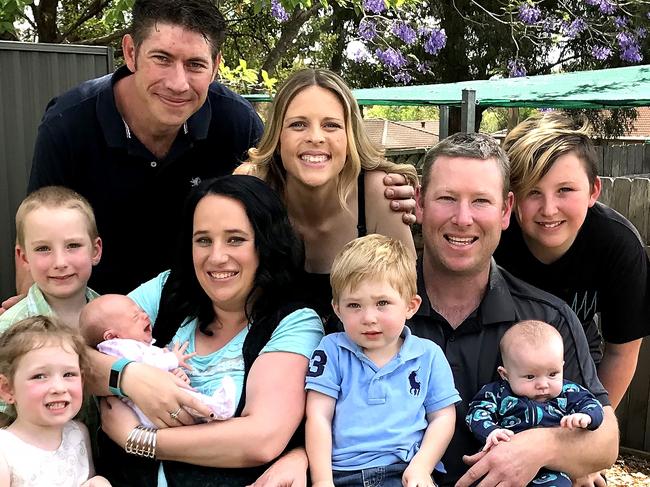
MORE FROM JANE HANSEN
WHY LOSING WEIGHT IS THE KEY TO A HEALTHY BABY
AMAZING RESCUES: ‘THANK YOU FOR SAVING MY LIFE’
“One day one of my students said: ‘Miss, do you have kids, you’d make a really good mum’ and I just broke down and had to have two weeks off work,” the 37-year-old said.
Around the same time the Thomases were coming to terms with this terrible news, Koby and David Argall from the South Coast had gone from the despair of failed IVF to the joy of two “surprise” children.
Somehow the failed round of IVF kickstarted Koby’s reproductive system and she gave birth to Brett, then Alaska.
David also had older children — Bailey and Mary — from a previous relationship so they were faced with what to do with the extra nine embryos they had created in IVF.
“It was not an option to destroy them, too much love and emotion and money had gone into making them and they were potentially our children,” Mrs Argall, 33 said.
Meanwhile the Thomases were investigating alternatives like sperm donation.
“That didn’t sit well with either of us when we could see me in our child but not Paul — and then a friend said have you considered embryo donation? It is where people who have finished with IVF donate to a couple like us and give the embryos a chance at life rather than them being discarded,” Mrs Thomas said.
Mrs Taylor went online to an embryo donation site and wrote a heartfelt plea, just as Mrs Argall was searching online for options for her embryos.
“I found their ad and something just clicked,” she said.
“Paul and David were so similar, they were the same age, both were cabinet makers, David’s middle name is Paul and (now I know Paul) they both make the same excited noise when they see free stuff on the side of the road.
“We had no idea what to expect, we wanted an open kind of relationship but we were unsure how to go ahead.”
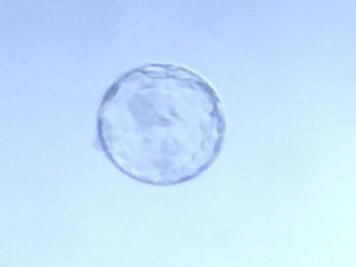
But the more the couples got to know each other over email, the more it felt like it was meant to be, so the embryos were transferred to Sydney’s Nextgen-Monash fertility clinic and the Thomases began their journey to parenthood.
The first two embryos ended in miscarriage but the third created baby James.
“When I was pregnant we text-messaged and I was really sick and Koby had the same severe morning sickness so she was really empathetic and we just bonded,” Mrs Thomas said.
“We also wanted our child to know them so we aimed for a barbecue once a year. James was eight months old when we decided the time was right and they came up to spend a weekend with us.”
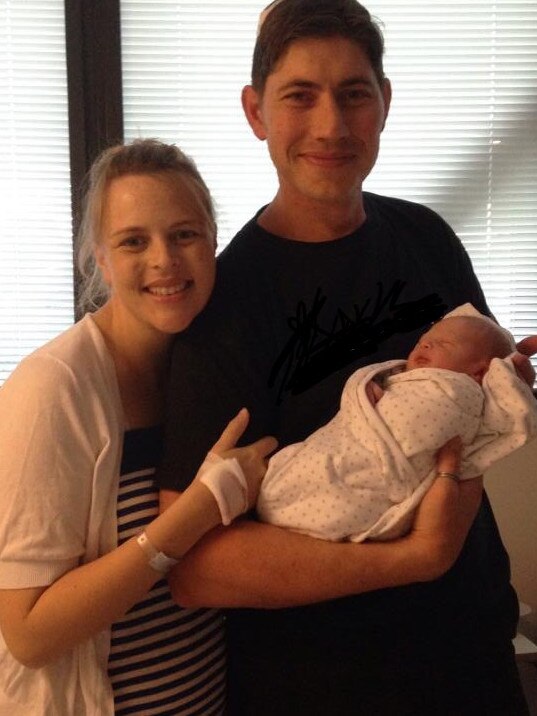
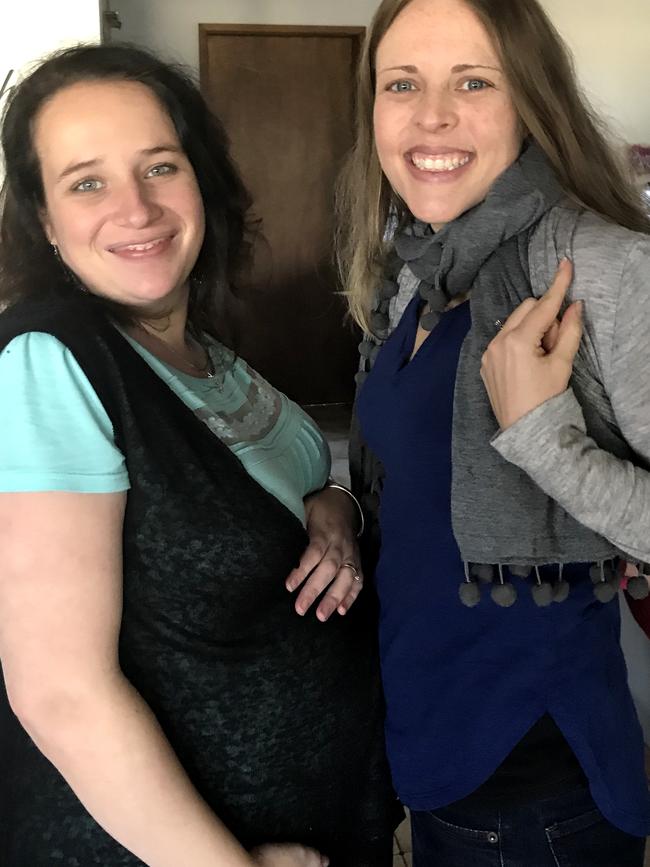
Mrs Argall was unsure how she would feel when she saw James.
“Once I saw the photos of him when he was born, I wasn’t upset at all, it was just how it was meant to be, I knew then it was the right decision,” Mrs Argall said.
Mr Thomas said he and Mr Argall have become “good mates with similar passions”.
“We are so blessed to live in a day of science when such an option is available,” he said.
And the two mums “feel like soul sisters separated at birth” and even timed getting pregnant again with their next babies.
William Argall and Hannah Thomas were born just a few months apart in 2017, genetic siblings but born to different mothers.
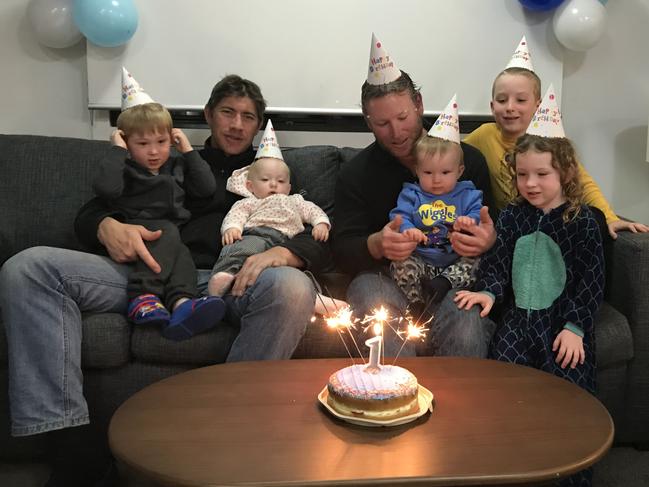
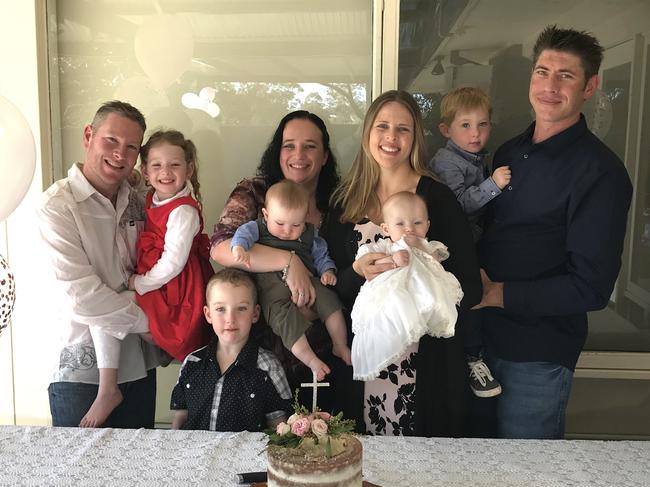
“We all now feel those embryos were meant to be ours. I tell the children that they are the people who helped us make them, that God found these special helpers,” Mrs Thomas said.
“Cathie and Paul call it God, I’m not religious so I call it fate and the funny thing is I think James looks like Paul and Alaska, my daughter, even looks like Cathie,” Mrs Argall said.
The families now spend holidays together while the Thomas kids call their donors Uncle and Aunty.
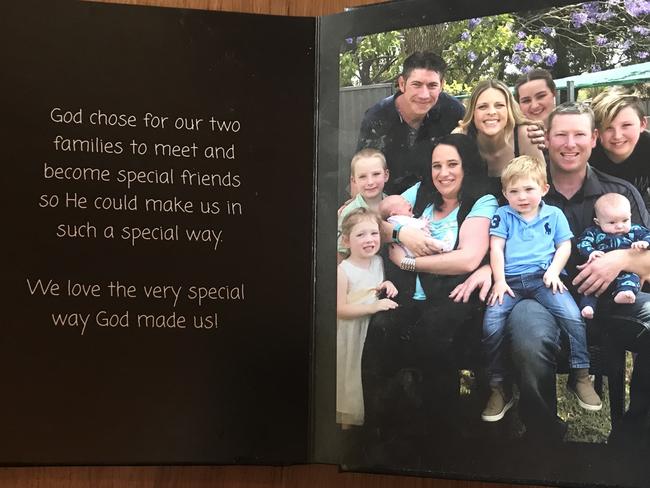
“I can sleep soundly now knowing we gave those embryos the best life ever and the icing on the cake is I got a best friend as well,” Mrs Argall said.
“We wanted our kids to have a relationship with the donors, they are now our friends and it is just so lovely that our kids will have that relationship with their genetic family,” Mrs Thomas said.
“They are 100 per cent our children, I don’t see it differently, I understand the genetics are there but, when it comes our children, we are their parents.”
Flinders University Researchers Dr Clare Bartholomaeus and Associate Professor Damien Riggs have studied families involved in donation and receipt and found that the ways in which people view an embryo affects the decision to donate or not.
Their study, published in New Genetics And Society, found those who viewed embryos as cells that had the potential to give another parent a chance to have a child were more likely to be open to embryo donation.
“People think about embryos in a range of ways” Prof Riggs said. “Some think of them as cells and then donating is an easier idea, others think of them as children to be, so the idea of giving away potential children idea is a barrier to donating embryos. Then what extended family may think comes into play as well, grandparents might say you can’t donate, they are family, so we need a public conversation about what an embryo means.”
The researchers called for support services and counselling for all family members, included extended family, to address the diverse views.
“The study highlights the need for a more holistic and comprehensive approach to supporting those who seek to engage in embryo donation in Australia,” Prof Riggs said.
